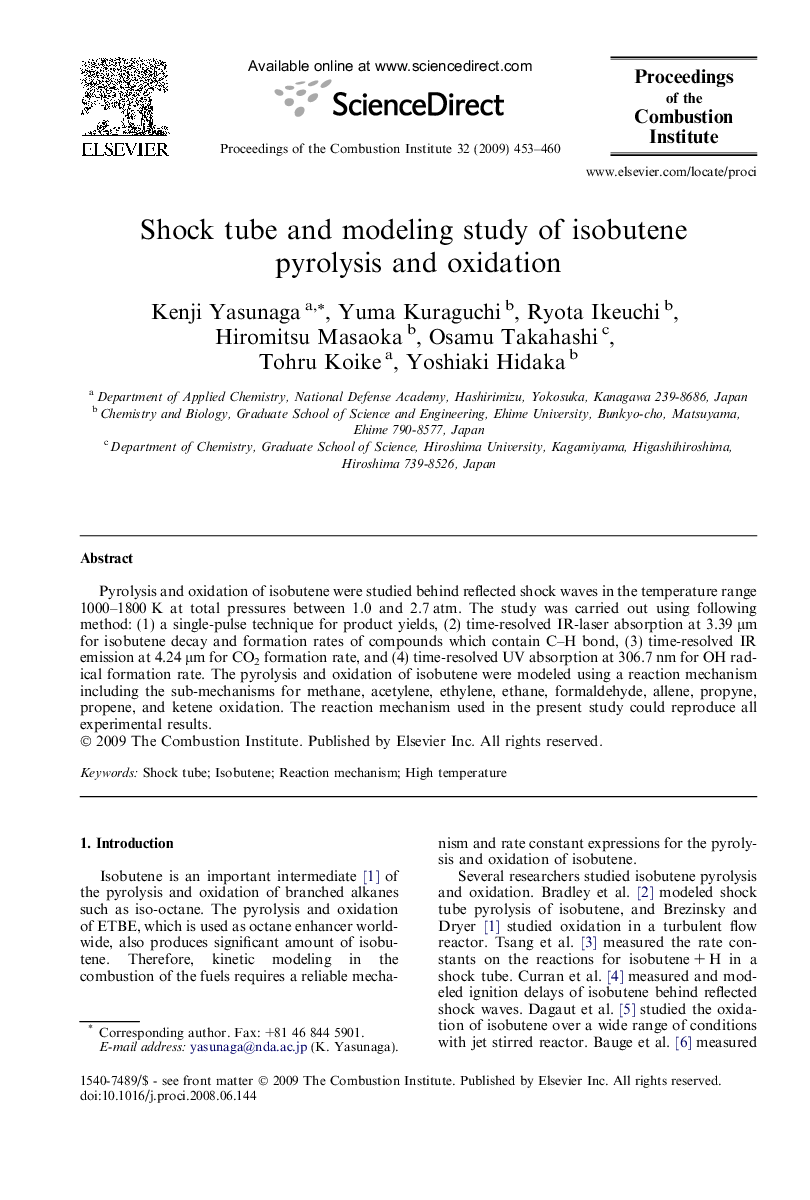| Article ID | Journal | Published Year | Pages | File Type |
|---|---|---|---|---|
| 6679436 | Proceedings of the Combustion Institute | 2009 | 8 Pages |
Abstract
Pyrolysis and oxidation of isobutene were studied behind reflected shock waves in the temperature range 1000-1800 K at total pressures between 1.0 and 2.7 atm. The study was carried out using following method: (1) a single-pulse technique for product yields, (2) time-resolved IR-laser absorption at 3.39 μm for isobutene decay and formation rates of compounds which contain C-H bond, (3) time-resolved IR emission at 4.24 μm for CO2 formation rate, and (4) time-resolved UV absorption at 306.7 nm for OH radical formation rate. The pyrolysis and oxidation of isobutene were modeled using a reaction mechanism including the sub-mechanisms for methane, acetylene, ethylene, ethane, formaldehyde, allene, propyne, propene, and ketene oxidation. The reaction mechanism used in the present study could reproduce all experimental results.
Related Topics
Physical Sciences and Engineering
Chemical Engineering
Chemical Engineering (General)
Authors
Kenji Yasunaga, Yuma Kuraguchi, Ryota Ikeuchi, Hiromitsu Masaoka, Osamu Takahashi, Tohru Koike, Yoshiaki Hidaka,
